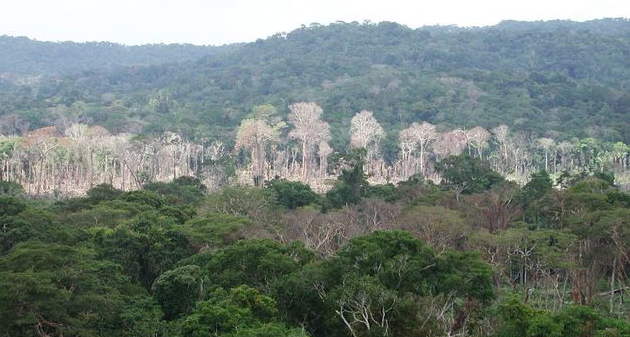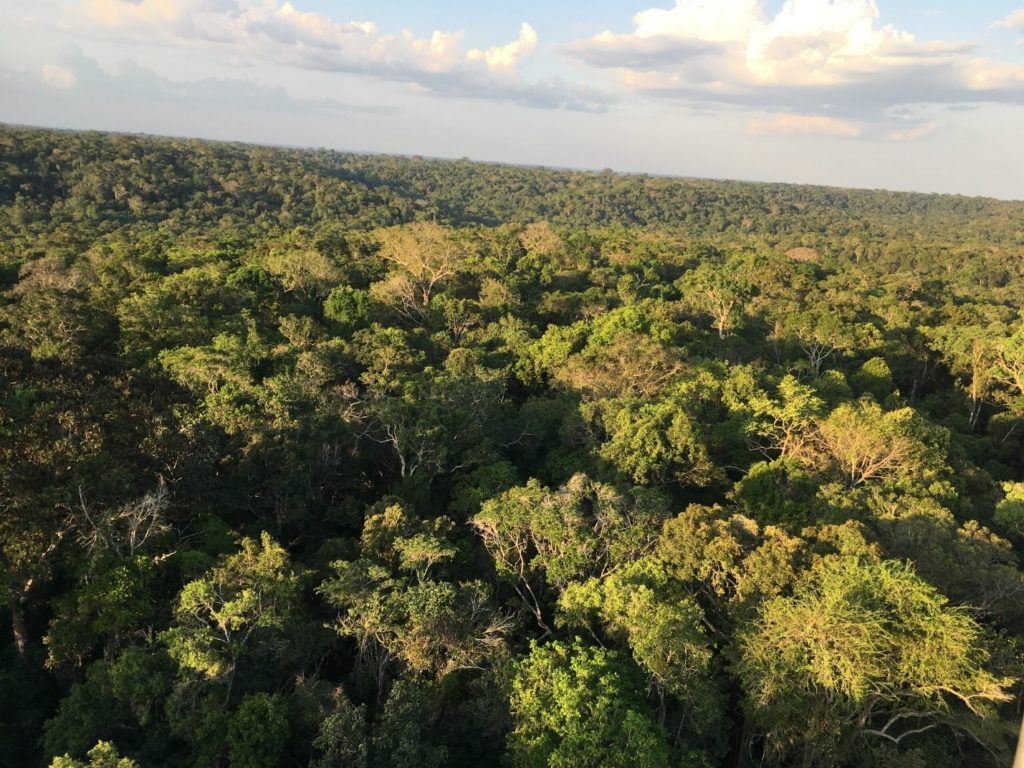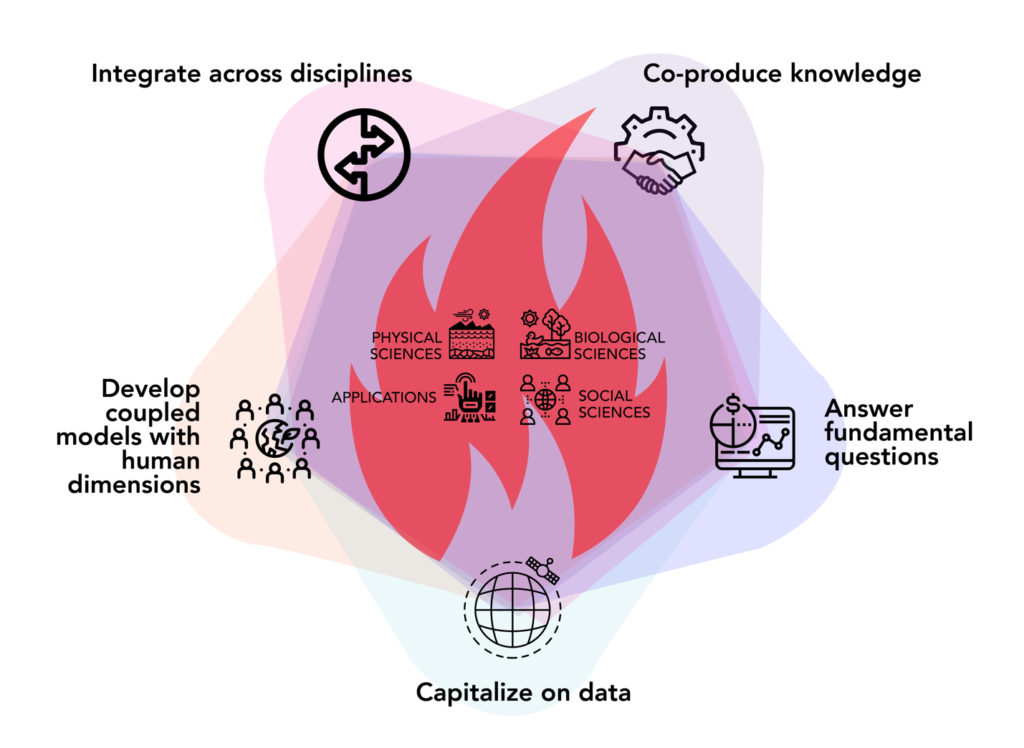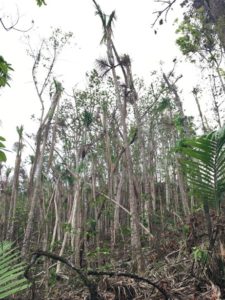Model results over Barro Colorado Island (BCI), Panama from an integrated model highlights important influence of topography and groundwater table on aboveground biomass of trees.
The Science
Topographic heterogeneity and lateral subsurface flow at the hillslope scale of ≤1 km may have outsized impacts on tropical forest through their impacts on water available to plants. However, vegetation dynamics and finer-scale hydrologic processes are not concurrently represented in Earth system models. This study integrated the Energy Exascale Earth System Model (E3SM) land model (ELM) that includes the Functionally Assembled Terrestrial Ecosystem Simulator (FATES), with a three-dimensional hydrology model (ParFlow) to understand how hillslope-scale hydrologic processes modulate aboveground biomass (AGB) along water availability gradients at Barro Colorado Island (BCI), Panama. The new coupled model is a useful tool for understanding the diverse impact of local heterogeneity on vegetation dynamics and plant-water interactions.
The Impact
Applying ELM-ParFlow-FATES at BCI, this research shows that water table depth (WTD) can play a large role in governing AGB when drought-induced tree mortality is triggered by hydraulic failure (i.e., inability of a plant to move water from roots to leaves). Furthermore, spatial variations of the simulated AGB and WTD can be well explained by topographic attributes, including surface elevation, slope, and convexity. Contrary to the simulations, the observed AGB in the well-drained 50 ha forest census plot within BCI cannot be well explained by topographic attributes or observed soil water, suggesting other factors such as nutrient status, heterogeneity in soil property and/or plant traits may have a larger influence on the observed AGB. This study points to opportunities for improving understanding of hydrological and ecological processes using the newly developed coupled model combined with observations.
Summary
The team developed a coupled model that integrates a three-dimensional hydrology model into the Energy Exascale Earth System Model (E3SM). E3SM includes the Functionally Assembled Terrestrial Ecosystem Simulator (FATES) for vegetation dynamics. The model was used to explicitly resolve hillslope topography and water flow underneath the land surface to understand how local-scale hydrologic processes modulate vegetation along water availability gradients. The team applied the model at BCI to simulate the AGB variability. They found AGB is higher in the wet areas compared to dry areas in the domain-wide simulations and AGB decreases nonlinearly with increasing WTD when WTD is less than 10 m. The degree of AGB variability differs depending on how hydraulic failure induced mortality is represented. Unlike for the modeled AGB, however, the team were not able to find similar relationships between topography and WTD with the observed AGB. To support the findings in this study calls for more data collection, e.g., soil moisture, WTD, AGB, and plant traits (e.g., wood density) across the hydrologic gradient.

Contact: Ruby Leung, Pacific Northwest National Laboratory, ruby.leung@pnnl.gov
Funding
This research was supported by the U.S. Department of Energy Office of Biological and Environmental Research as part of the Terrestrial Ecosystem Science program through the Next Generation Ecosystem Experiment (NGEE) Tropics project.
Publications
Fang, Y., Leung, L. R., Koven, C. D., Bisht, G., Detto, M., Cheng, Y., McDowell, N., Muller-Landau, H., Wright, S. J., and Chambers, J. Q.: Modeling the topographic influence on aboveground biomass using a coupled model of hillslope hydrology and ecosystem dynamics, Geosci. Model Dev., 15, 7879–7901, https://doi.org/10.5194/gmd-15-7879-2022, 2022.




